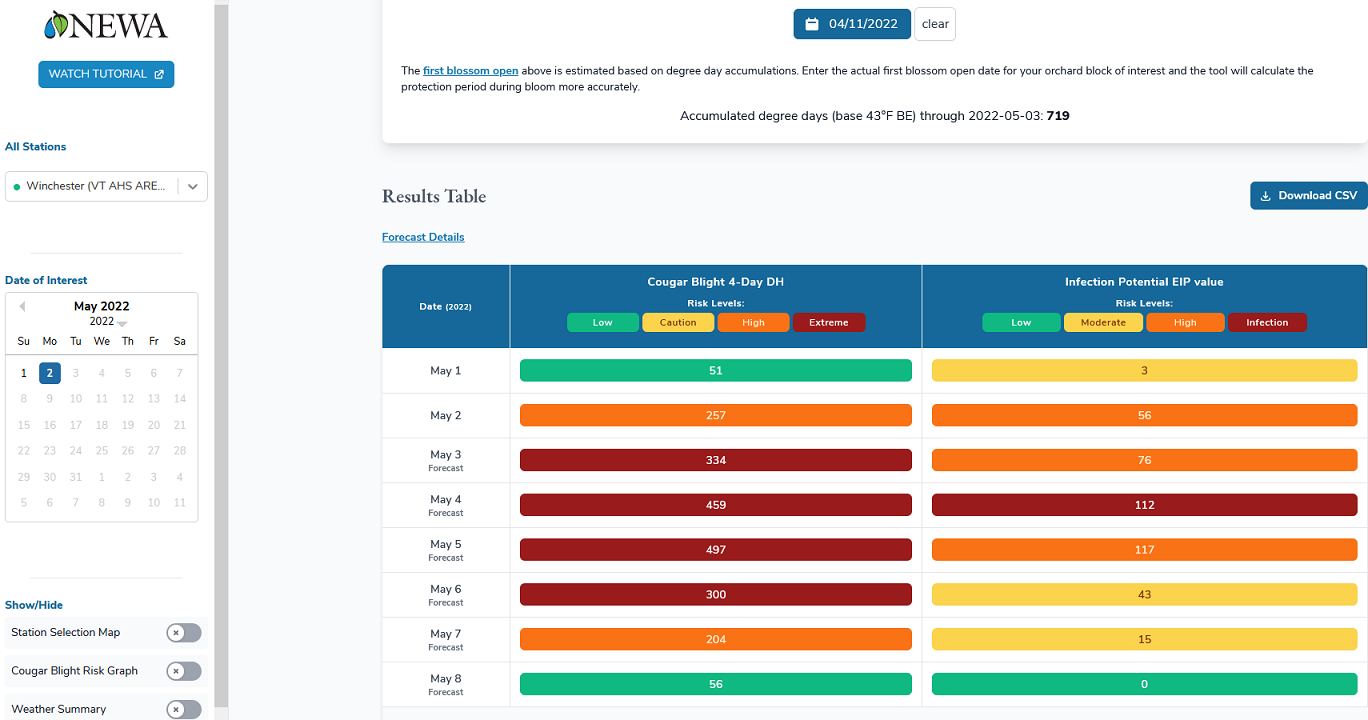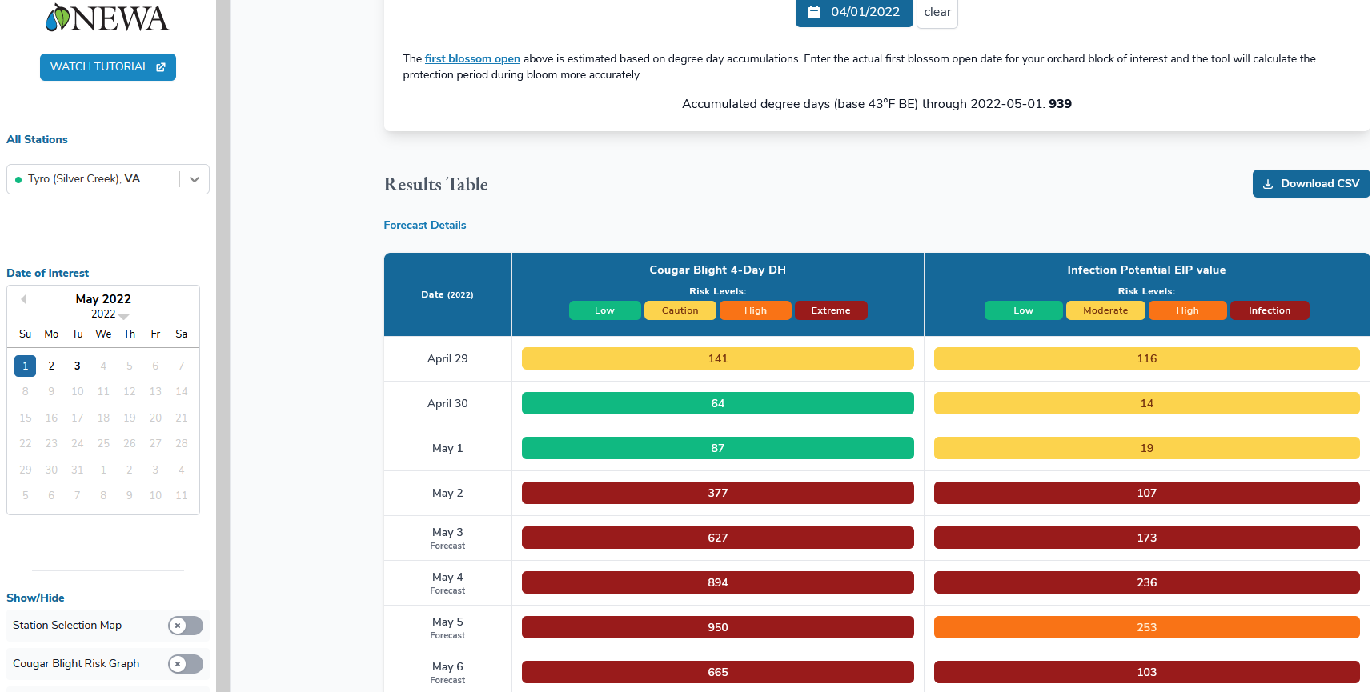1. Fire Blight Infection Possible May 2-4 Depending on a Location; 2. Scab, Rust, Powdery Mildew Still Relevant Threats
1. In and near Winchester, the NEWA’s EIP model is calling for infection on 4 May with the thunderstorm rain events we might get this afternoon, evening or tomorrow morning. In central Virginia, apple orchards are at or past petal fall, so any late blooming cider varieties and young trees in bloom should be protected with streptomycin today ahaed of infections predicted from 2 – 4 May. In and around Winchester, the best spray window is today before the rain or within 24 h after the wetting event that is predicted to trigger the infection tomorrow 4 May. For central Virginia where infection was called yesterday, there is still time to apply streptomycin within 24 h after the wetting event of yesterday, but only in any late blooming orchards. Timely apply streptomycin on late bloom varieties (fresh and cider) and in young apple orchards 1 to 8 years old. Extra protection is needed as young trees naturally bloom later and are prone to lingering bloom. All flowers that open late in the season are extremely prone to fire blight infections since fire blight ooze is most of the times readily available from fire blight cankers at this time of the year and will spread infections to the flowers.
Apply streptomycin with Regulaid or LI700 just before or within 24 h after the wetting event that is predicted by RIMpro and/or Maryblyt (Infection Potential EIP value in NEWA) to allow fire blight infection. Streptomycin protects only blossoms that are open at the time of spraying. Once the spray deposit dries it will not redistribute with re-wetting. To protect newly opened flowers, repeated sprays are necessary if wetting events are predicted to occur during EIP 100 or above based on NEWA EIP fire blight model. Use NEWA’s great option to enter the “Streptomycin Spray Date”, which is under “Wetness Events Table” in NEWA fire blight model, and thus calculate the need for additional streptomycin applications using the NEWA’s fire blight models. Do not use Regulaid or LI700 with any sprays that contain thinning materials, so strep included with a petal fall spray should never be mixed with Regulaid/LI700, as this will increase the thinning effect. If you want to apply streptomycin with thinning materials, do not add LI700 or Regulaid. Adding a good adjuvant to streptomycin (and Regulaid is the best) will improve uptake of the streptomycin into surface tissues and that is especially beneficial when sprays are applied under fast-drying conditions. However, Regulaid should never be combined with captan, and other adjuvants that are sometimes used with captan that are generally applied at rates that will not provide the penetration effects like that which we get with Regulaid/LI700. The above recommendations are based on the below model predictions taken at 10 AM today:


2. Petal fall and first cover are critical for control of scab, juniper rusts and powdery mildew on apple leaves and fruit, so adding an effective fungicide with mancozeb to protect against these diseases. At AREC, our weather data indicates we had a scab infection with the rain event on May 1st and protecting against it necessary. At petal fall, I would recommend using Rally, Topguard, Rhyme, Cevya or Procure plus mancozeb, but if powdery mildew was not that big of an issue last year, you can use Inspire Super plus mancozeb instead which is best option for scab and rust and scab control. Using Inspire Super at petal fall and/or first cover can be the best option because it contains cyprodinil, a fungicide that is effective against Botrytis (if Botrytis is not resistant). Powdery mildew can have an extended infection periods in highly susceptible cultivars until first or second cover, so reserving DMI fungicides for use by second cover in these cases is necessary. If powdery mildew was not an issue last year, Inspire Super plus mancozeb would also be my recommendation for the first cover (10 days after petal fall). If mildew is a more of a priority for you, use Aprovia, Fontelis, Sercadis, Miravis or Excalia plus mancozeb (3 lb/A) and you will control both scab and powdery mildew with these fungicides.
